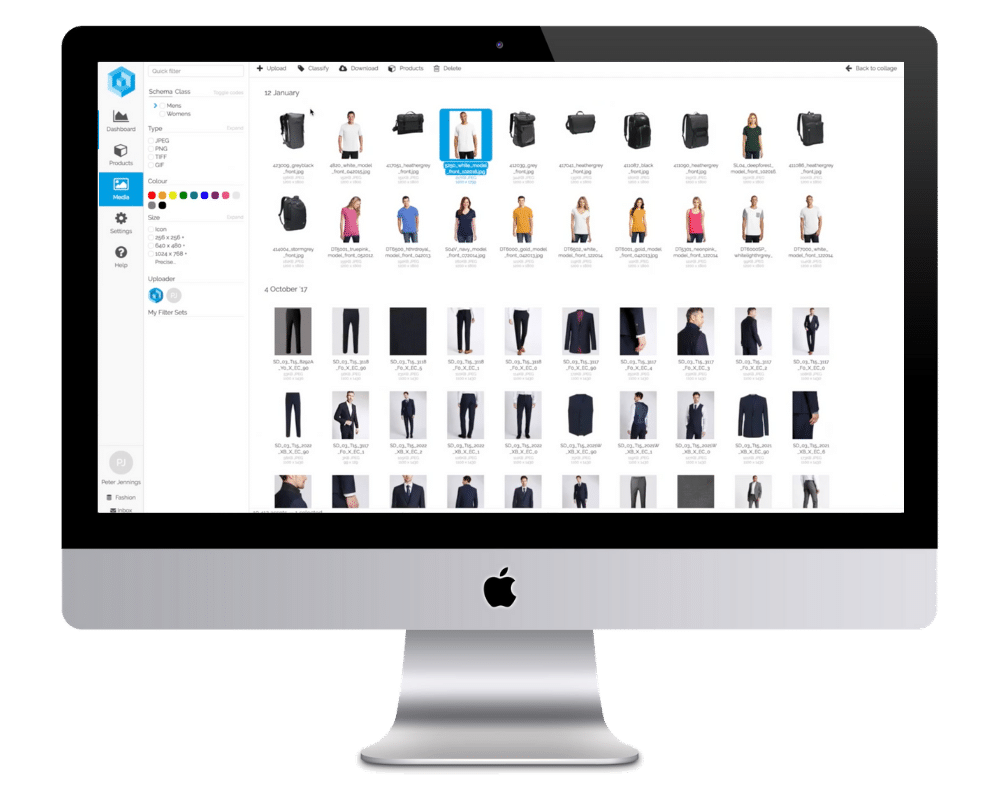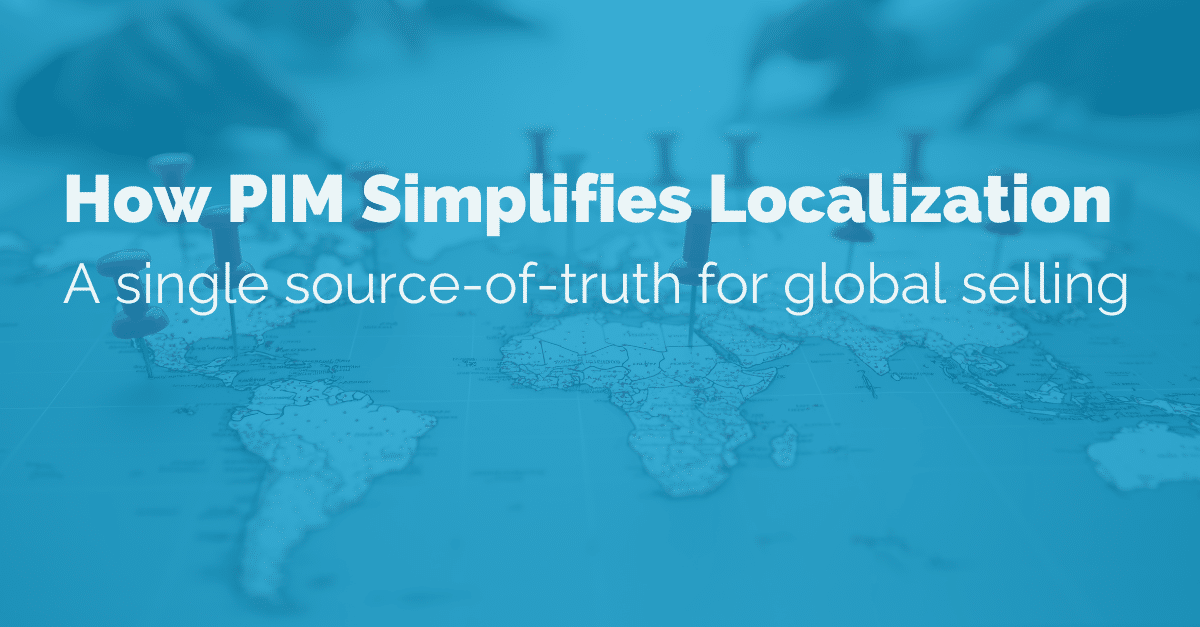Key Takeaways:
-
Composable commerce lets brands build their tech stack with best-of-breed solutions, enabling greater agility, scalability, and personalization.
-
Migrating to composable commerce requires thoughtful data migration, strategic architecture planning, and a strong foundation of centralized product information.
-
A Product Information Management (PIM) system plays a crucial role in streamlining the migration and maintaining consistency across touchpoints.
What Is Composable Commerce?
Composable commerce is a modular approach to building eCommerce experiences. Instead of relying on a single platform to handle everything—catalog, checkout, CMS, search, promotions—a composable tech stack allows businesses to choose the best solution for each capability and integrate them using APIs.
It’s based on the principles of MACH (Microservices, API-first, Cloud-native, Headless) architecture, empowering retailers and manufacturers to quickly adapt to changing customer expectations, market demands, and emerging technologies.
Use Cases
1. Rapid expansion into new markets: Businesses entering new geographies can spin up localized experiences without rebuilding an entire platform.
2. Personalized digital experiences: Brands use optimized search, recommendation engines, and headless CMS platforms to tailor experiences by persona or channel.
3. Complex B2B product catalogs: Manufacturers and distributors can deploy highly customized catalogs and workflows using composable tools integrated via API.
4. Frontend experimentation: Marketers and developers can A/B test new UX features and website designs without impacting backend operations.
Why It Matters for Modern eCommerce Teams
Challenge #1: Platform Limitations and Vendor Lock-In
Traditional legacy platforms bundle all functionality into one stack. While convenient at first, they often become hard to customize. Development cycles are longer, updates may require downtime, and businesses are dependent on a single vendor’s roadmap.
Solution via Composability
Composable commerce frees you from these limitations. By selecting specialized tools for each layer—PIM, CMS, checkout, ERP—you can future-proof your tech stack and adjust it piece by piece.
For example:
-
Swap out your CMS without touching your cart function
-
Replace your search engine with a new AI-driven tool
-
Connect new channels like mobile apps, social storefronts, or B2B portals without rewriting your core stack
It’s like building with Lego blocks instead of pouring a concrete foundation.
Benefits of Migrating to Composable Commerce
Key Feature #1: Future-Proof Flexibility
As eCommerce evolves, so do customer expectations. With a composable setup, you’re not stuck waiting for your all-in-one platform to support the next big thing. This can come in the form of new voice commerce, AI search, or Digital Product Passport compliance.
You gain:
-
Faster innovation cycles
-
The ability to test new tools and features with minimal risk
-
Vendor independence and reduced total cost of ownership over time
Use Case Example: Fashion Brand Scaling Across Channels
Imagine an emerging fashion brand that begins on Shopify but quickly needs more advanced capabilities.
Instead of undergoing a risky replatforming, they incrementally adopt:
-
A headless CMS for editorial control
-
A best-in-class search engine for merchandised discovery
-
A cloud-native PIM to manage SKUs across marketplaces
-
An API-based checkout that supports international currencies
The result? A flexible tech stack that evolves as they grow.
Migrating to Composable Commerce and PIM: Why Data Is Your Foundation
Before you migrate to composable commerce, you need a single source of truth for product data. That’s where a Product Information Management (PIM) solution becomes indispensable.
A robust PIM like Pimberly enables you to:
-
Centralize product data across all systems—ERP, eCommerce, apps, catalogs
-
Cleanse and normalize attributes so every system speaks the same language
-
Automate syndication to channels like Amazon, Shopify, and digital catalogs
-
Manage variants, bundles, and hierarchies with precision
This foundational layer allows your composable tech stack to function seamlessly. Without it, integrations can break down, creating inconsistencies and delays across systems.
FAQs About Migrating to Composable Commerce
Q: What’s the difference between headless and composable commerce?
A: Headless commerce separates the frontend from the backend, allowing for design freedom. Composable commerce takes it further by allowing every part of your tech stack—frontend, backend, search, CMS, cart, promotions—to be selected and integrated independently.
Q: Is composable commerce only for large enterprises?
A: Thanks to modern, low-code APIs and SaaS integrations, businesses of all sizes can migrate to composable commerce architecture incrementally.
Startups might begin with a headless frontend and specialized search, while scaling businesses can replace backend components (i.e. payment gateways) as needed.
Q: How do I ensure a smooth data migration?
A: Begin by auditing your existing product data. Clean and enrich it within a PIM system. Map it to your new stack’s requirements. Work with integration partners to ensure seamless transitions and minimize downtime.
Q: What are the biggest migration risks?
A: Poor data hygiene, incompatible systems, and lack of internal alignment are the most common pitfalls. That’s why having a clear migration roadmap—and a centralized source of product truth—is essential.
Q: Can I integrate AI tools into my composable stack?
A: Absolutely. AI-powered search, personalization engines, and recommendation platforms are easy to slot into a composable framework. In fact, composability often accelerates your ability to test and deploy new AI tools.
Takeaways for Teams Looking to Migrate to Composable Commerce
To summarize: composable commerce is more than a buzzword; it’s a strategic evolution of how eCommerce is built and scaled. It allows you to:
-
Replace clunky, monolithic platforms with agile, best-in-class tools for better user experiences
-
Innovate faster by testing and integrating new services without full replatforming
-
Own your roadmap and customer experience
But composability demands a strong foundation. That begins with clean, centralized product data.
A PIM like Pimberly enables your business to move towards composability with confidence, streamlining workflows, reducing errors, and unlocking new revenue opportunities across channels.






















